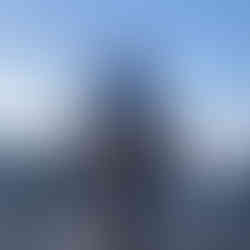Alexanderplatz
- bethjbrown
- Jun 30, 2022
- 2 min read

Sunday night Kyle, Taylor and I walked to Alexanderplatz, one of the most famous squares in Berlin. Initially I was most interested in seeing the astronomical clock in the middle of the Plaza as part of my ongoing search for "Unique Clocks of Europe." But what I found was vastly different style of Berlin than the areas of Unter Der Linden and Museumsinsel. Alexanderplatz retains a very heavy and lingering Soviet influence. The architecture is less adorned and more stark, the Brutalism style evident in many surrounding buildings. We did not spend much time here, but I have since been reading up a little more about it. Here is some of what I've found out!
The Red Town Hall (Rotes Rathaus) is the current headquarters for the Senate of Berlin
The Clock
Clocks throughout Europe are as varied as the people they serve. The World Clock in Alexanderplatz might just be one of my favorites for its atomic age design. The main cylinder of the clock is divided into 24 segments, one for each hour of the day. Above and below the hours are lists of cities in the same time zone. The central part rotates in real time displaying what time it is in large cities around the world. A spinning replica of the solar system rises above the rest of the clock, reminding us of our place in the greater galaxy. I love how this clock sits in the middle of the plaza, slowly spinning away, pulling the world together through time.
A Rather Rosy View
I am always interested in the history of places, and finding sources from various moments in that history. This video created in 1963 shares a positive review of the up and coming Alexanderplatz, and a rather optimistic view of East Germany just two years after the separation and building of the wall.
The TV Tower
Berlin's TV Tower dominates the skyline from much of downtown. But what is this tower for? And why is it still here?
The Protest
On 4 November, 500,000 people gather for a rally on Alexanderplatz in East Berlin. It is the largest non-state-organised demonstration in GDR history. Members of the crowd were protesting against the communist regime. A mere five days later, on November 9th, the wall was torn down and the borders of East Berlin and West Berlin were opened.













Comments